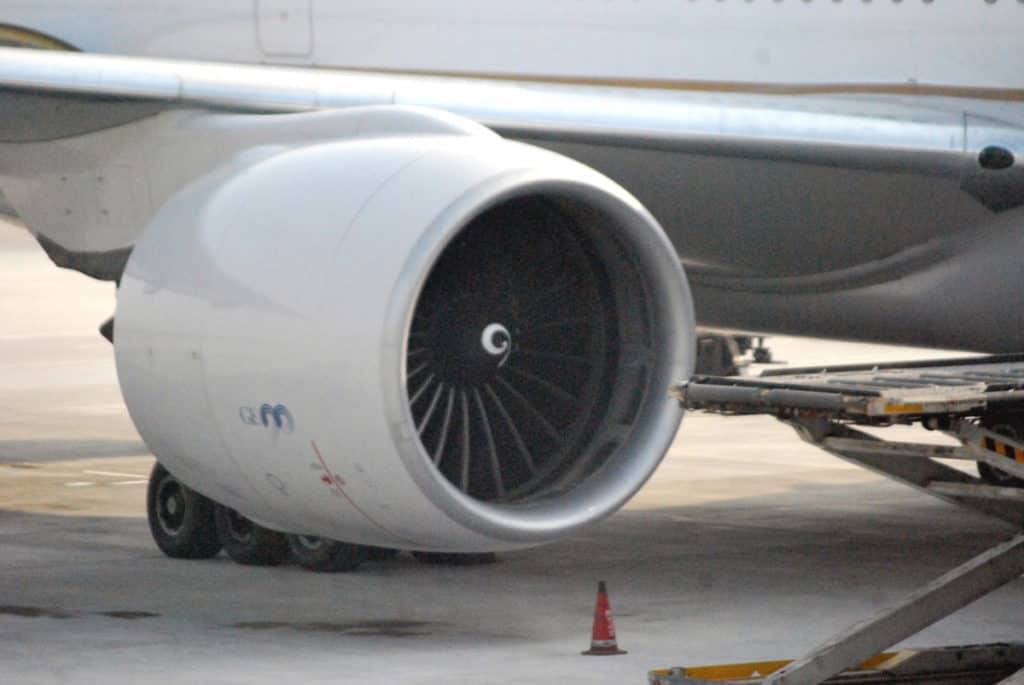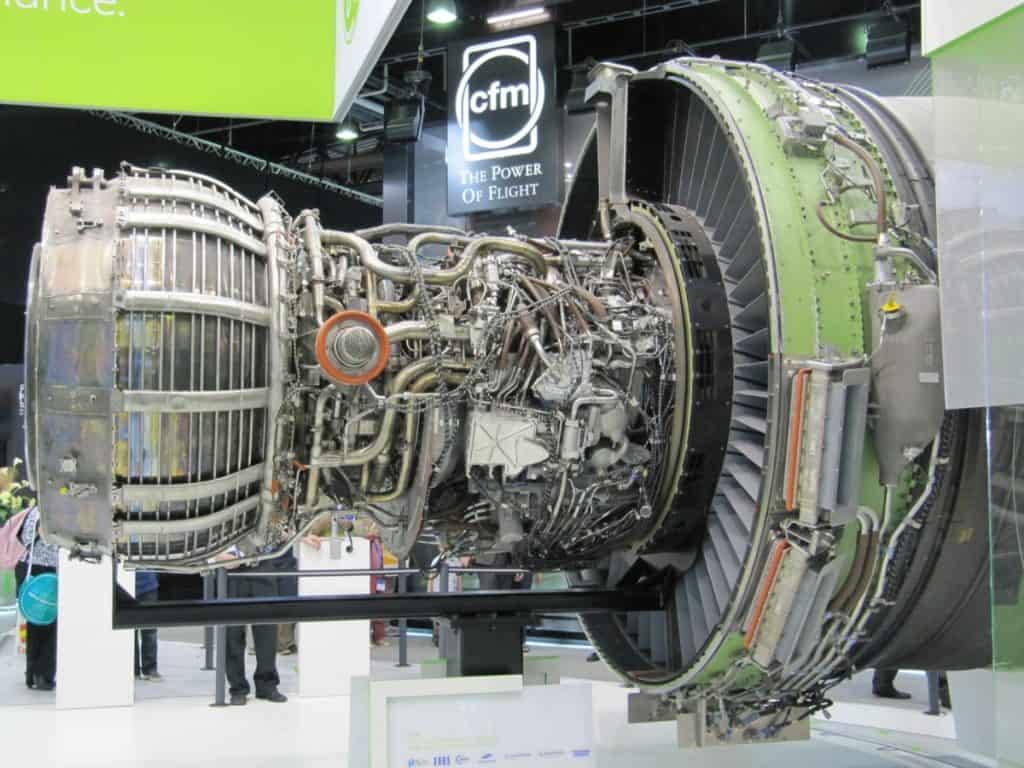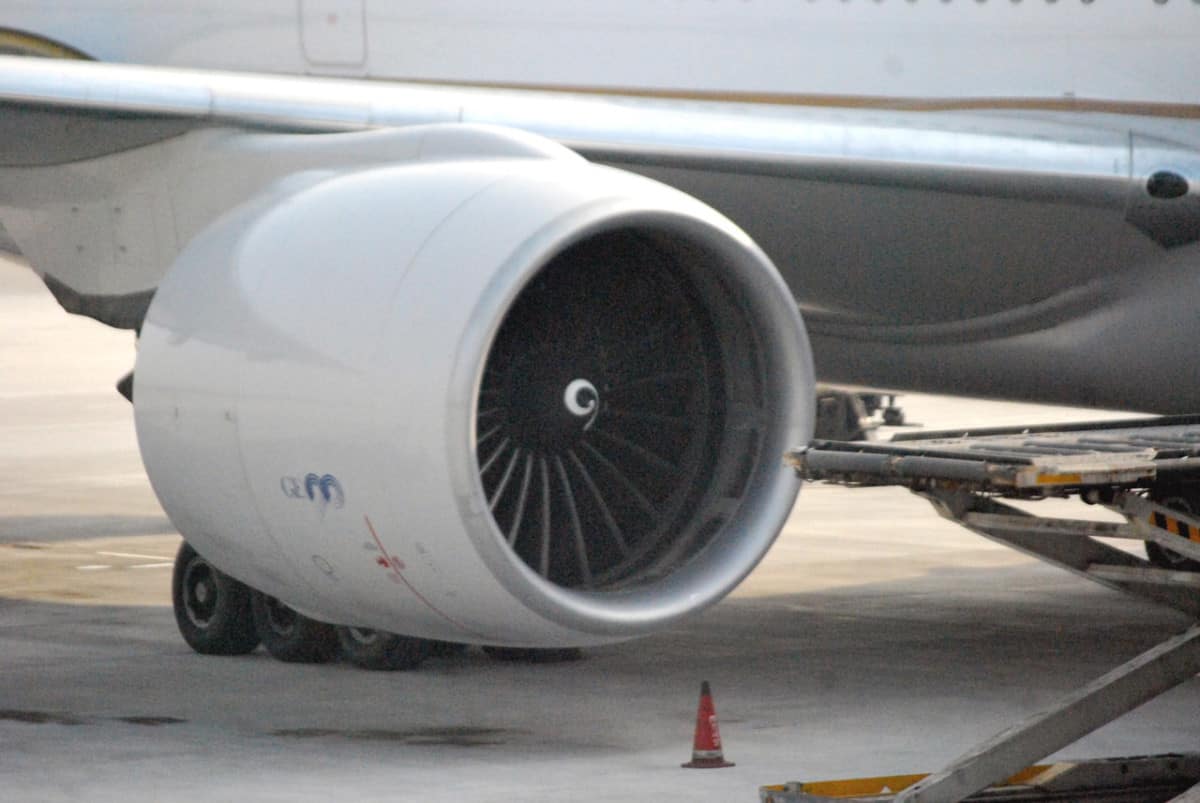
We have all sat in the terminal looking out at the airplane we are about to board. Some engines seem huge when a person walks next to them. The question may have arisen as to just how much do these huge airplane engines cost and what makes them so expensive.
Airplane engines are expensive due to the immense research, design, and testing that goes into the development of each engine. Fuel efficiency, reliability, weight, and safety are mandatory for each engine and the use of exotic and new materials ensures this but increases costs dramatically.
Airplane engines are a marvel of modern engineering. They have to generate huge quantities of power, yet be lightweight, efficient, safe, and reliable. The cost of the engines is a significant part of the overall price of the aircraft.
Safety is a major concern in the aviation industry and because of their incredible design history, the high reliability of aircraft engines has made air travel the safest mode of transportation.
A malfunction of an engine, while the airplane is in flight, can be disastrous, so the manufacturers ensure that the engines are built to the highest safety standards using the latest technology, materials, and techniques.
All of these factors add to the cost of each engine so to find out why please read on…
How Much Do Aircraft Engines Cost?
Manufacturers do not openly display list prices for their engines for commercial reasons. Each contract is negotiated on case to case basis. However, in the table below are the approximate prices of some popular aircraft engines.
The engine/s are the single biggest unit cost on any aircraft.
| Aircraft Type | Aircraft Make | Engine Type | Engine Make | Price $USD |
|---|---|---|---|---|
| Training | Cessna 172 Skyhawk | Piston | Lycoming O-360 | $35,000 |
| Passenger | ATR-72 | Turboprop | P&W PW100 | $900,000 |
| Business Jet | Gulfstream G650 | Small Turbofan | Rolls Royce BR710 | $1.8M |
| Business Jet | Embraer Legacy 600 | Small Turbofan | AE 3007 | $3.76M |
| Passenger | Airbus A220 | Medium Turbofan | P&W PW1500G | $10.0M |
| Passenger | Boeing 777 | Large Turbofan | GE GE90 | $24.0M |
Why is it Expensive to Design and Develop Aircraft Engines?
Design & testing of new engine components takes years to develop. Efficiency, testing, improvement, and safety dictate every component has to be optimized to improve overall engine efficiency but this takes time which increases development costs. Lightweight but strong exotic materials also increase the cost.
Surely you would not want the engine of your aircraft to fail in mid-flight. Don’t worry, modern airplane engines are built to be so reliable that general aviation aircraft experience engine shutdowns less than once every ten thousand flight hours.
Jet engines such as the General Electric GE90 turbofans powering the Boeing 777 have failure rates less than once per million flight hours and this is due to the billions of dollars spent in the design of the engine.
The design process for every new aircraft engine is very rigorous. High-level engineering expertise and resources are required to design, test, and develop the engine.
Where I grew up is the global home of Rolls Royce aero-engine with many of my family and friends working there. There are over 9,000 other employees with hundreds of trades and areas of expertise required to develop a new aircraft engine in my hometown alone. All of this expertise accounts for tens of millions of dollars in salary every month.
Learn More…
Try These Articles:
* How Much Fuel Do Airplanes Carry? (With 15 Examples)
* Do Helicopters Have Jet Engines – Some Do, Some Don’t!
To take a tour of the Rolls Royce factory, please see Sam Chui’s video below:
The engines themselves are incredibly complex and require unimaginable tight machining and manufacturing tolerances. The machines and expertise required to manufacture these parts require considerable investment. The only way to recoup those costs is in the price of each engine.

The power turbines inside most modern jet engines can be rotating at speeds up to 60,000rpm. Any out-of-balance component can lead to a catastrophic engine explosion. Not only do engineers have to design the engine to be fuel-efficient, powerful, reliable, lightweight, and safe but also have to ensure the engines do not come apart or explode when they fail so violently.
To ensure the engines do not come apart designers build the engine to be able to ‘Inflate’ during the explosion, but then return to its shape after containing the mechanical failure. Airplane engineers do not want parts of an exploding engine to penetrate the wing. Wings contain fuel and create lift. Losing a wing will end up in fatalities.

Join My Newsletter & Get Great Tips, Information and Experiences To Help You Become a Superb Pilot!
To test the engine’s ability to contain a catastrophic failure test engineers conduct ‘Blade Off’ tests where a fan blade is sheared at its root during full power to ensure the engine can contain the energy and debris.
A second test they also complete is ‘Bird Ingestion’. This situation was quickly brought into the public eye when Captain Sullinberger landed his Airbus A320 in the Hudson River after ingesting multiple birds during takeoff.
Test engineers fire frozen turkeys into the engine to simulate bird ingestion and monitor how the engine reacts.
These are just some of the numerous tests engines go through before being certified. Other tests include:
- Cold/Hot Weather
- Intense Rain
- Hail Ingestion
- Fuel Efficiency
- Oil Starvation
- Dust Ingestion
- Salt Water Corrosion
- and many, many more…
To see just some of the tests an engine goes through see the video below:
In addition to the vast resources required to develop an engine, is the materials used within the engine itself. Alloy honeycombs, ceramics, carbons, composites, and precious metals are all common but the ways in which they are used are also developed by the manufacturer to stay at the forefront of engine evolution.
This research and development (R&D) play a large part in the cost of each engine. Competition is fierce between the ‘Big 3’ players in the engine manufacturing industry and to stay ahead of the pack requires each engine to be better than the rest.
Rolls Royce, General Electric, and Pratt & Whitney spend billions on R&D to ensure their engines get picked by airplane manufacturers and airlines when the next big aircraft order hits the books. Again this cost gets added to the sale price of each engine.
Here is a great explanation on Wikipedia of just what goes into designing a turbine blade – Click Here
Over the life of an engine, the airline’s single biggest operating cost is fuel. When an aircraft manufacturer like Boeing or Airbus is looking for a new engine for their latest aircraft the engines’ power, reliability, cost, and fuel efficiency are paramount. Designing an engine to fulfill these requirements requires immense investment.
Each component on a new engine has to go through a process similar to this:
- Design concept
- Technical specifications finalized
- Research
- Material selection
- Supply chain selection
- Detailed design and drawings using Computer-Aided-Design (CAD)
- Computer modeling for stress, fatigue, and efficiency
- Machining process
- Quality control inspection
- Testing and performance analysis
- Improvements and refinements
- Release for installation
- Installation technique design
- Logistics for on-time assembly
Each of these links in the process chain can involve dozens of employees and depending on the component can take months to progress through the development process. As each engine contains thousands of components and the time required to design a new engine, design and install the production line and supply chain, and then finally assemble and test an engine is not a quick or cheap process.
Here is a video of just 5 of over 80 steps involved just to produce a single Turbofan Blade:
If you then multiply this by over 25,000 components for each engine, and add in the research, design, and testing for each part you can see how the price of each engine comes out to millions of dollars. The price is also reflected in the number of engines forecasted to be sold.
A $10B investment budget spread over 500 engines comes out to roughly $20M per engine, if 700 engines are sold that price drops to $14.3M per engine. That difference between engine numbers can be the only difference why an engine gets selected for a new aircraft!
Learn More…
Try These Articles:
* What Is A Helicopter Blade Made of? It Used To Be Wood!
* What Fuel Do Aircraft Use? – Same As Your Car???


